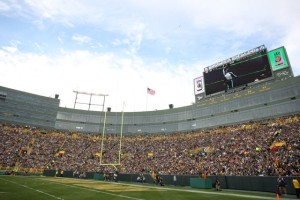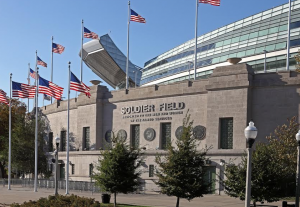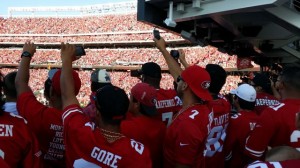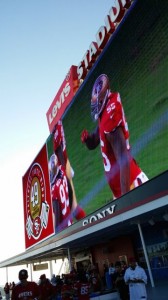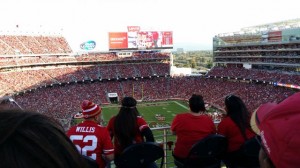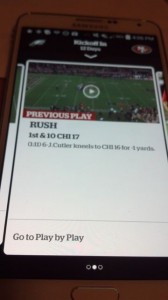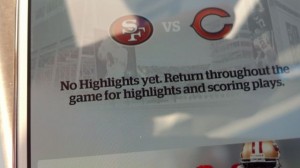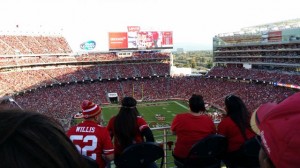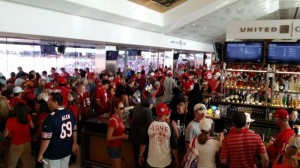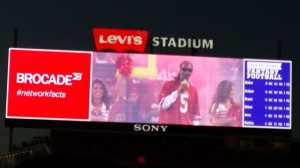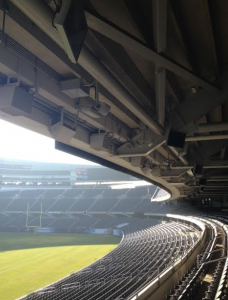Editor’s note: The following team-by-team capsule reports of NFL stadium technology deployments are an excerpt from our most recent Stadium Tech Report, THE PRO FOOTBALL ISSUE. To get all the capsules in one place as well as our featured reports, interviews and analysis, download your free copy of the full report today.
NFC NORTH
Reporting by Paul Kapustka
Green Bay PackersLambeau Field
Seating Capacity: 80,735
Wi-Fi – Yes
DAS – Yes
Wi-Fi has finally come to the NFL’s frozen tundra, courtesy of a deployment from Extreme Networks and backed also by Verizon Wireless. Like in Seattle, fans in Green Bay will be able to access two separate Wi-Fi networks – one for Verizon customers, the other for all other cellular customers. Verizon is also the host of the neutral DAS, which counts AT&T as a customer. (See cover story profile.)
Chicago Bears
Soldier Field
Seating Capacity: 61,500
Wi-Fi – Yes
DAS – Yes
The home of Da Bears remains the only NFL stadium we know of that still charges for Wi-Fi use – the network, provided by Boingo Wireless, costs fans $1.99 per day. AT&T and Boingo also recently updated the already-robust DAS around the stadium, adding coverage for tailgating areas as well.
Detroit Lions
Ford Field
Seating Capacity: 65,000
Wi-Fi – Yes/limited (Verizon customers only)
DAS – Yes
Verizon customers at Ford Field will have access to Wi-Fi, but customers from other carriers are out of luck.
Minnesota Vikings
TCF Bank Stadium
Seating Capacity: 52,000
Wi-Fi – Limited / in select areas only
DAS – Yes
As Vikings fans wait for the opening of the new U.S. Bank Stadium – which is supposed to have the latest in stadium Wi-Fi – they will spend one more year without Wi-Fi at TCF Bank Stadium. UPDATE: According to AT&T, the DAS installed in 2014 was upgraded this season, from 10 to 17 sectors. Several Vikings home games this season have seen 200+ gigabytes of data on the AT&T network on the DAS, according to AT&T.
